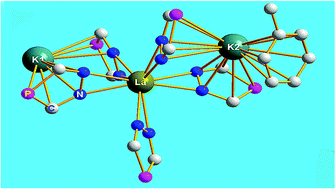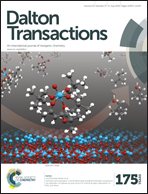1,2,4-Diazaphospholide complexes of lanthanum(iii), cerium(iii), neodymium(iii), praseodymium(iii), and samarium(iii): synthesis, X-ray structural characterization, and magnetic susceptibility studies†
Abstract
A few heteroleptic, charge-separated heterobimetallic, and polymeric alkali metalate complexes of 1,2,4-diazaphospholide lanthanum(III), cerium(III), neodymium(III), praseodymium(III), and samarium(III) were simply prepared via the metathesis reaction of MCl3 (THF)m (m = 1–2) and K[3,5-R2dp] ([3,5-R2dp]− = 3,5-di-substituent-1,2,4-diazaphospholide; R = tBu, Ph) in a varied ratio (1 : 3, 1 : 4, and 1 : 5, respectively) at room temperature in tetrahydrofuran. All the complexes were fully characterized by 1H, 13C{1H}, 31P{1H}, IR, and X-ray single crystal diffraction analysis despite their paramagnetism (excluding La(III) complexes). The structures of the complexes were found to feature varied coordination modes. The magnetic properties of several compounds were studied by magnetic susceptibility, and the complexes presented the magnetic moments close to or lower than the theoretical values for the free ions in the trivalent oxidation states (Pr3+, Nd3+).


 Please wait while we load your content...
Please wait while we load your content...